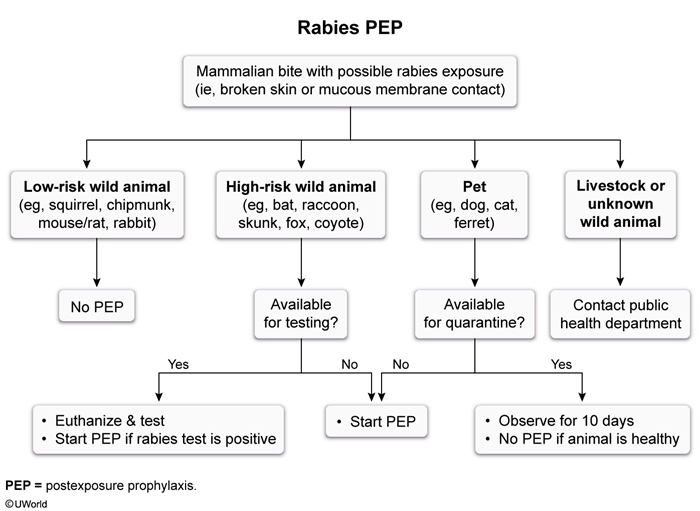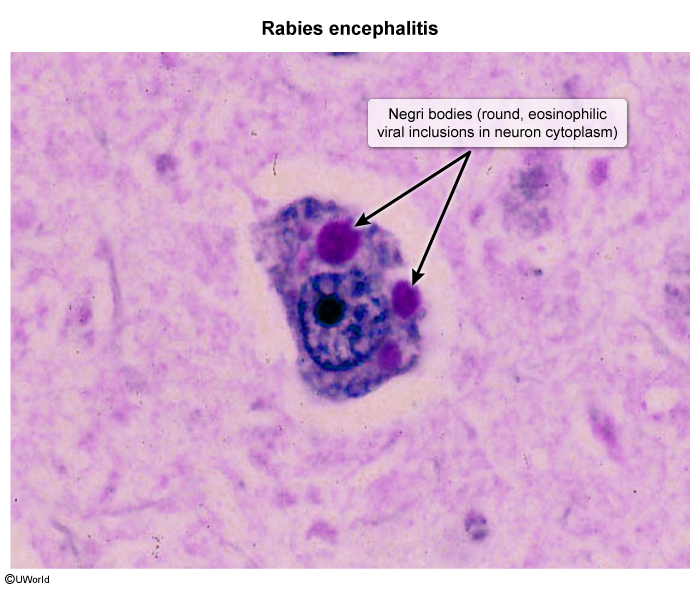Rabies
Article Sections
Introduction
Rabies is a fatal viral infection transmitted via saliva of infected animals that affects the central nervous system (CNS).
Pathophysiology
Rabies is caused by a neurotrophic single-stranded RNA virus from the Rhabdoviridae family. Exposure usually occurs when patients come into contact with contaminated saliva from an infected animal after a bite. The virus replicates locally within the muscle tissue of the bite wound for several days or weeks. It contains a bullet-shaped envelope with knob-like glycoproteins that allows it to attach to the nicotinic acetylcholine receptor at the neuromuscular junction; the virus then travels in a retrograde fashion through peripheral nerve axons to the dorsal root ganglia. From there, it rapidly ascends the spinal cord and initially infects the brainstem and hippocampus; it eventually spreads throughout the rest of the brain from that point. Within the CNS, the virus causes neuronal inflammation, leading to the characteristic clinical picture.
Continue Learning with UWorld
Get the full Rabies article plus rich visuals, real-world cases, and in-depth insights from medical experts, all available through the UWorld Medical Library.
Figures

Images
